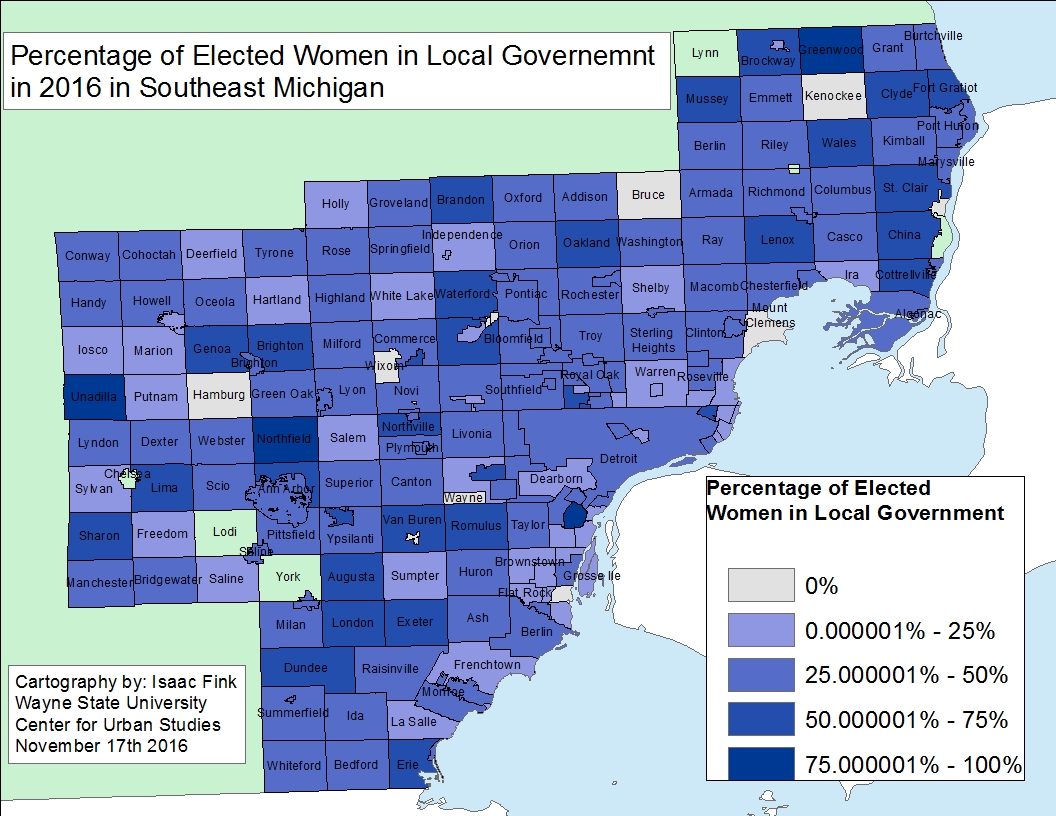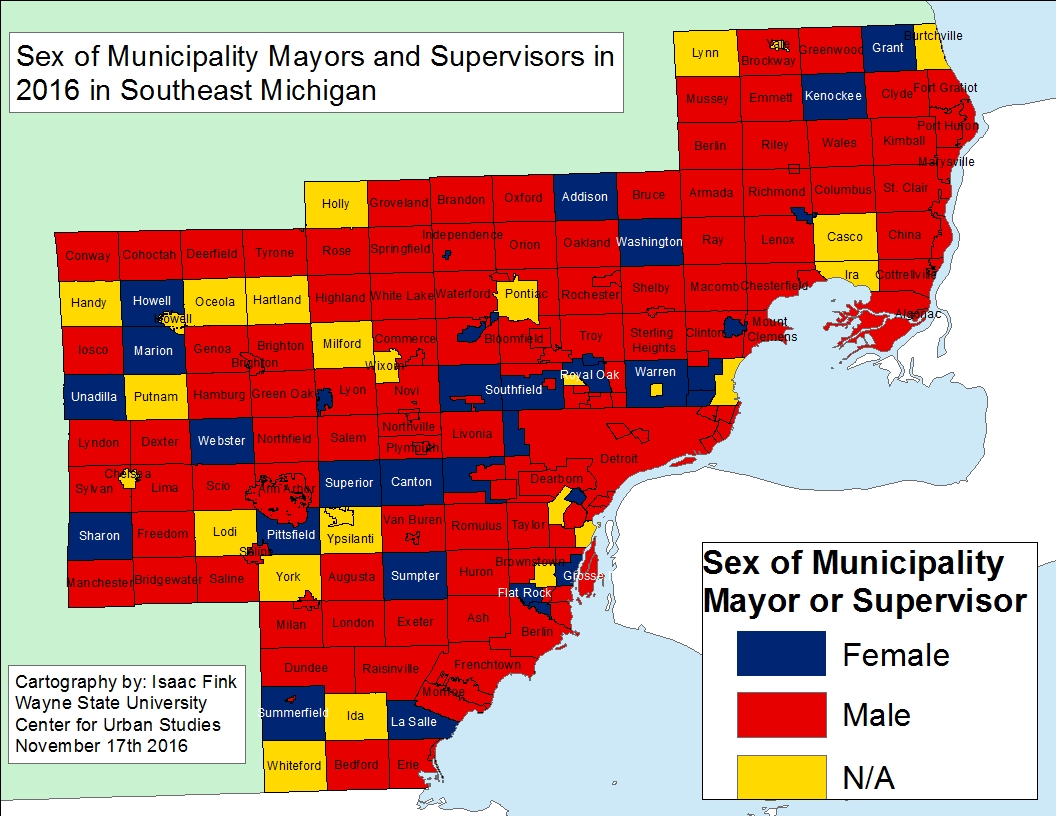While women make up 51 percent of the Nation’s population, they do not hold at least 50 percent of the elected positions. This is true at the national level where women currently hold less than 20 percent of the seats in Congress. In Michigan women make up 20 percent of the state legislature (women currently hold 31 of the 148 seats). Digging beyond elected positions at the national and state level, we see that at the local level in Southeastern Michigan women generally hold between 25-50 percent of the elected seats in a municipality.
The data used for the maps represent individuals currently holding office; the maps do not reflect who was elected to serve beginning in 2017. Municipalities with an “NA” have that designation because the information could not be found.
In Southeastern Michigan there are nine municipalities where there are no women currently sitting on the city council or township board. The majority of the region though has elected bodies where women make up 25 to 50 percent of the council or board. Greenwood Township in St. Clair County is the only municipality in the region with an entirely female board. In Greenwood Township the board is made up of five positions-supervisor, clerk, treasurer and two trustees-each of which is currently held by a female. Of all the counties in the region, St. Clair County has the highest percentage of municipalities where more than 50 percent of a township board or city council is made up of women. In Wayne County, the average percentage of women holding a seat on a township board or city council is 31 percent; three of the municipalities with no women elected to the public body are located in Wayne County. In Detroit, 44 percent of the City Council is made up of women.
In the second map below we see that women are less represented in the top leadership roles of elected bodies of a township board or city council. Of the about 220 municipalities in Southeastern Michigan only 29 have women serving as a Township Supervisor or a Mayor. Wayne County had the bulk of these women; there are currently eight municipalities there with a woman township supervisor or mayor. In Oakland County there are six municipalities with women serving as a township supervisor or mayor and in Macomb County there are five. Monroe and St. Clair counties both had the least amount of women elected to serve in such roles. There are only two municipalities in each county with women serving as a township supervisor or mayor.
While there are pockets of Southeastern Michigan where women are more represented on local elected bodies than those in Congress or in the Michigan Legislature, the overall trend still shows that women typically make up less than 50 percent of an elected body. Although not an elected position, women are also less represented in leadership roles when it comes to local government administration. In a future post we will look at what sex of city managers and top administrators of local municipalities.











